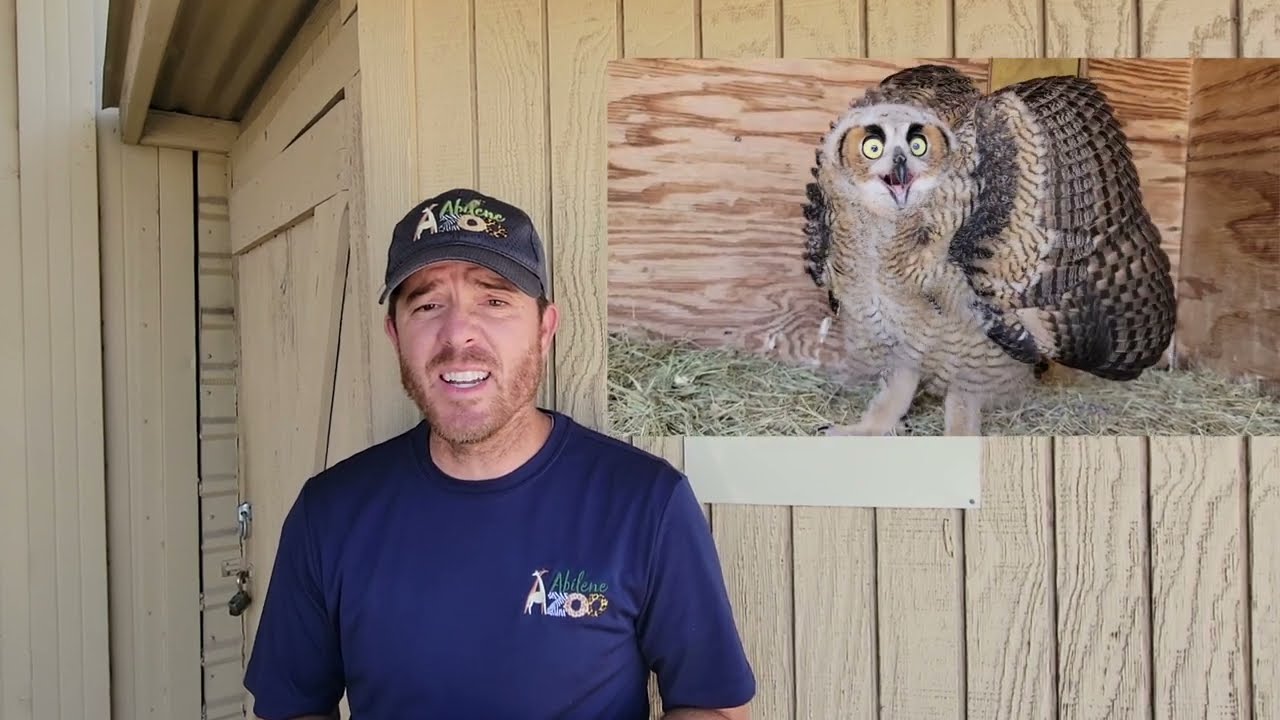*****
Summary of Transcript:
The video is an update on a great horned owl chick introduced to a resident owl named Einstein. The babe has been growing well and is now as big as Einstein. It was weighed and found to be about 200-300 grams lighter than Einstein but close to its adult weight. The chick’s feathers are also developing well; it can fly and use its talons and beak effectively. The video ends with the hope of releasing the chick into the wild soon.
*****
Summary of Description:
The Abilene Zoo Bird Rehab team updates on the progress of a great horned owl’s rehabilitation and whether it will be released soon.
*****
Abilene Zoo Bird Rehab Team’s Great Horned Owl: A Journey of Progress
The rehabilitation process of injured animals is a challenging task that demands perseverance and patience. At the Abilene Zoo, the dedicated team at the Bird Rehab facility has been caring for a great horned owl that suffered injuries in the wild. The Abilene Zoo Bird Rehab team has been working towards nursing the animal back to health, and the progress has been promising.
The following article describes the journey of progress made by the team in rehabilitating the great horned owl and the possible outcome of its release in the wild.
Initial Condition of the Owl
The great horned owl rescued by the Abilene Zoo Bird Rehab team was vulnerable. It suffered an injury that impaired its flying ability, putting the bird at risk of starvation and predation. The owl was brought to the Abilene Zoo in January 2021, and the treatment began.
Recovering through Medical Treatment
The first step in the rehabilitation process was providing medical care for the owl. A detailed assessment was done to diagnose the extent of its injuries. The owl was treated for its wounds, and the team partnered with Texas Parks and Wildlife to establish an appropriate plan to support its recovery.
The Rehab Process
Following the medical treatment, the owl was moved to a rehabilitation program. The process involves assisting the owl in regaining its strength through physical therapy and exercise and providing enough food to help it sustain its power. The team monitored the owl’s progress in every aspect, including assessing its ability to shoot, fly, and perch.
The Progress Made So Far
As the treatment progressed, the owl’s condition began to improve. The bird showed signs of recovery and strength, such as hooting, perching, and exercising. The team also noticed that the owl has a healthy appetite, a positive sign of its progress.
The Potential for Release
The goal of the Abilene Zoo Bird Rehab team is to ultimately rehabilitate the great horned owl and introduce it back into the wild. Over the past few months, the team has been working tirelessly to ensure that the owl has an optimal chance of survival back in the wild. Although the team cannot yet conclusively determine the owl’s readiness for release, they remain hopeful.
Final Thoughts
In conclusion, the Abilene Zoo Bird Rehab team’s journey in rehabilitating the great horned owl has been a rollercoaster of events thus far. The team’s dedication, expertise, and hard work have positively contributed to the owl’s progress. Though there have been challenges, the team remains hopeful that the owl will soon be ready to release into the wild, contributing to nature’s ecosystem. Waiting for the final verdict, we can only wish the team well in rehabilitating the great horned owl.
*****
Source Description
Learn from our Abilene Zoo Bird Rehab team about our great horned owl’s progress in his rehabilitation. Will it be a release candidate? Find out soon.

